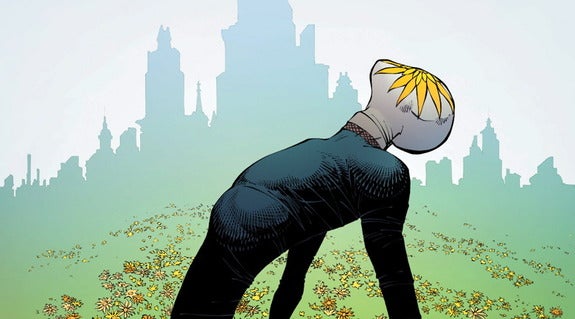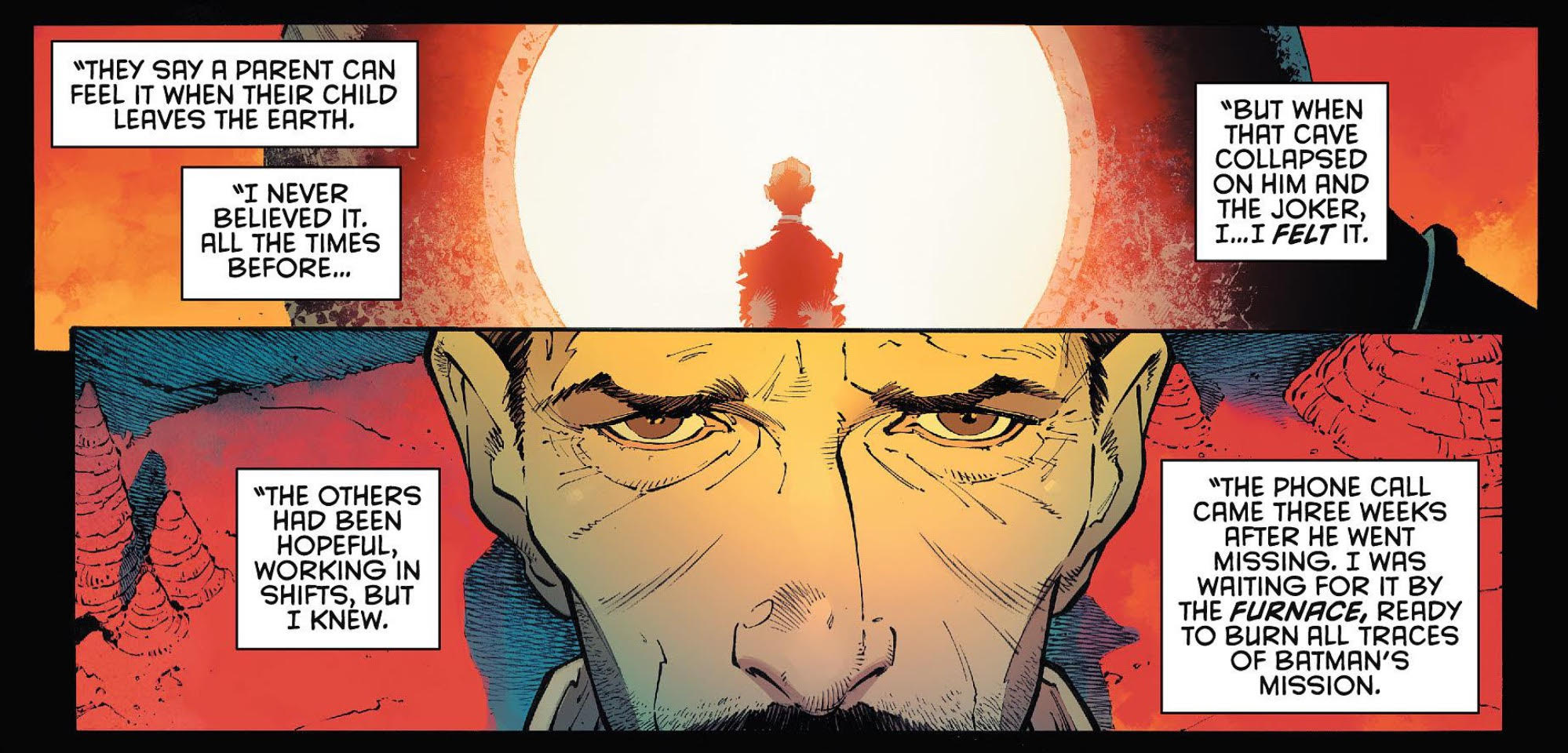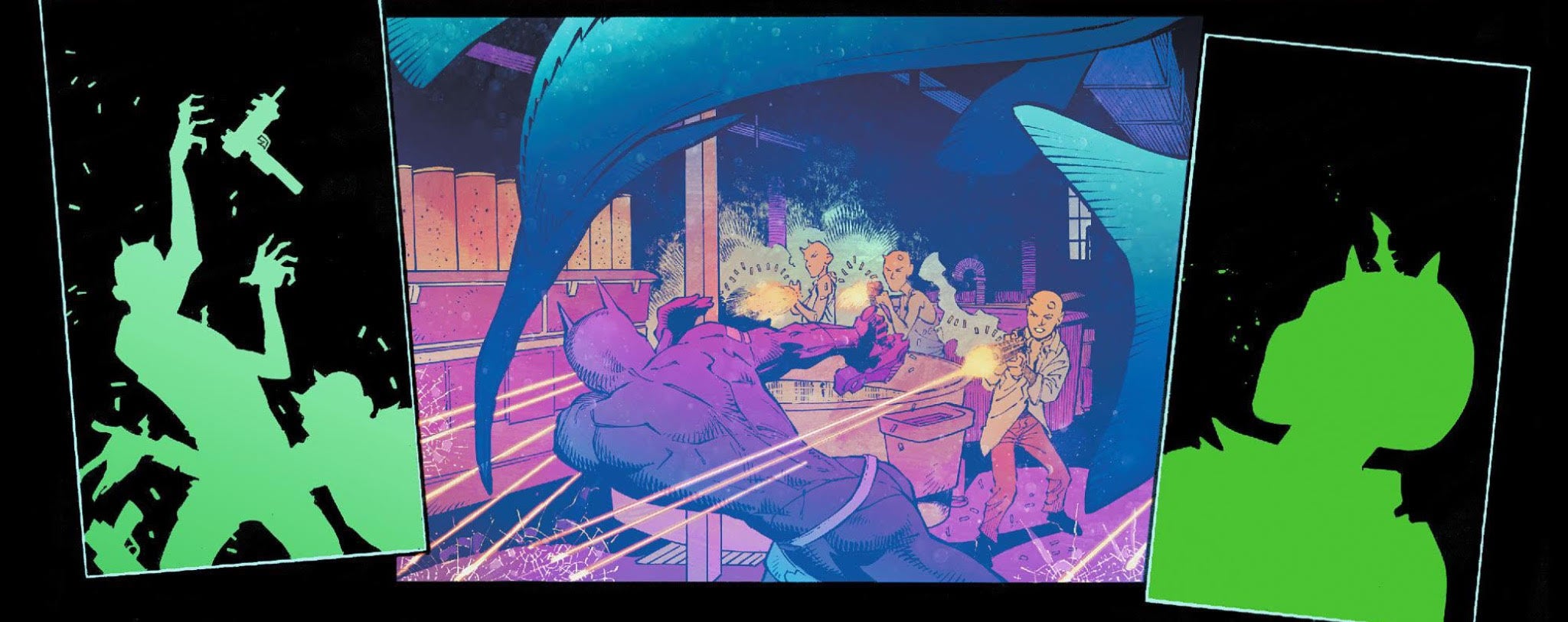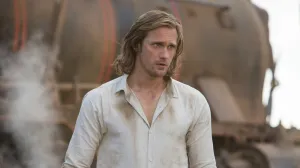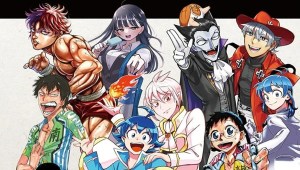After the first couple issues of “Superheavy”, Greg Capullo and Scott Snyder have firmly established the new status quo of Batman. Jim Gordon is The Dark Knight, complete with his own suit, support network, and inside jokes. With the details fully-fleshed, Batman #43 cracks open the story’s larger arc.It ties the hints and clues of the first couple of issues into a big cliffhanger and reveal, preparing the story to leave behind large quantities of exposition in favor of a more grand adventure. There is a lot of promise to be found in this issue, assuaging any remaining doubts about the potential of Bat-Gordon.
Videos by ComicBook.com
There is still a lot being explained in the pages of Batman #43 though. It features two long expository sequences at the very start with varying degrees of effectiveness. The first between Bruce Wayne and Jim Gordon, both in civilian identities, does an excellent job of conveying character dynamics alongside important information. Subtle cues in their conversation allow readers to pick up on changes in the power dynamic of these two men. Gordon’s inquiries obviously upset Bruce, and when asked if they are okay, it is Gordon who takes the lead. This kind of dialogue is no accident. It exposes Gordon as the dominant half of the pair, something that was never true before whether Bruce was in his civilian or superheroic identity. That kind of character work makes the expository dialogue much more palatable, as it is driven with equal concern for character and plot.
But the later conversation between Alfred and Superman does not allow the same exposure for both characters. While Alfred’s choices and their motives are always clear, Superman’s are purely plot-driven. Alfred explains what has happened to Bruce since he was found alive, and explains why Bruce has not reclaimed the mantle of Batman. It is a very sympathetic monologue, one that that makes both emotional and logical sense. Superman continues to push Alfred to expose Bruce to the truth and try to return him to life as Batman. Why is Superman pressing this cruel course of action? How can he feel so much more certain than Bruce’s adoptive father-figure? There is no answer to be found for these questions in Superman’s presentation or in previous appearances in Batman. He appears to be uncaring and cold, as everything he says is designed to reveal more significant information for this story. Unfortunately, this simplifies him to a function of plot, making the entire sequence read awkwardly at best.
Fortunately, Capullo recitifys the weak chemistrybetween these two by keeping the story visually focused on Alfred. A flashback to Alfred’s emotional journey from the conclusion of “Endgame” to his discovery of Bruce told vertically on a single page is incredibly effective. Narrative captions fill in the details, but this page is truly about Alfred’s feelings. Close ups fill most panels and Alfred’s eyes–as seen in panel two–give readers all the information they could need. He is a father aching for his son, tired and missing a piece of himself. It is not overwrought or melodramatic, just the eyes of a man who has lost that which is most dear to him.
FCO Plascencia highlights the transition in Alfred’s mood as well. The first couple of panels glow, lit by reds and oranges. This is Alfred experiencing the great pain of losing a child before becoming numb to that constant agony. A shift to black and white that ends with Bruce found in the cold rain creates a remove within Alfred’s psyche. He has come to accept the death of the Bruce Wayne he knew, preparing him to accept the second chance being presented here. Later panels where Alfred and Bruce reconnect are shown in the faded colors of well-worn photographs. Their soft hues highlight both the familiarity between these two friends, but also Bruce’s distant memories.
As enjoyable as these smaller, emotionally impactful depictions are, Capullo still includes wild, creative flourishes in a spread highlighting Batman’s potential futures. Four potential future deaths are revealed–and they are bananas. Rather than simply homaging famous alternate realities or current villains, each invents a fresh reality. It is a delight to dig into these single-panel stories, but the second spread of the issue manages to pack an even greater punch.
The backhalf of Batman #43 focuses on a confrontation between Gordon (in his unarmored Batman suit) and the Devil Pigs gang. It presents the Snyder, Capullo, and Plascencia team at their best. This gangland showdown is big, exciting, and a little bit deranged. It’s the sort of thing that you can only imagine being pulled off in a Batman comic. Movies can eat their heart out. The setting for this battle is simply amazing. An enormous fishtank filled with horned sharks and glowing tubes of fish eggs decorate the criminal den, and Capullo takes full advantage of all these elements in the action that follows.
The spread that serves as a centerpiece to the fight is an example of comics action sequences worthy of a textbook. Without a single word it creates narratives for all of the characters involved. The entire page is bathed in a balance of neon lights and consuming darkness by Plascencia. These elements play against one another to highlight the most important movements and moments. Each action is met with a reaction, and Capullo guides the reader’s eyes between each point so that it all coheres into a single propulsive experience. It is a world class display of storytelling efficiency delivering on the most exciting promises of the superhero genre.
All of this leads to the big cliffhanger of Batman #43, the reveal of Mr. Bloom. The less said about this encounter, the better. Too much information will ruin the experience of reading it, and it is quite the experience. Capullo should be commended for his character design. The first and final pages of Batman #43 create a bookend featuring Mr. Bloom. The first page focuses purely on his flower emblem. It turns something warm and beautiful into an ugly, cruel mouth. That design is added to the full form of Mr. Bloom at the end, a minimalist design that adds focus to the flower. There are some analogous elements to a modern-day boogeyman as well. The last page seemingly ensure that Mr. Bloom will be joining Batman’s classic rogues gallery in the same way the Court of Owls already have.
While Batman #43 is still laying down tracks for the rising action bound to follow, the promises made between and during the exposition are incredibly exciting. Mr. Bloom’s reveal is the clear, standout moment of the issue, but there is a lot to love here. Capullo and Plascencia are still effortlessly delivering each action and emotion-oriented beat. Snyder continues to bring Batman to wilder places with enough death traps and introspection to satisfy all sorts of fans. It’s the promise offered by both the talent of this team and the best moments of this issue, that ensures Batman‘s place as one of the best superhero comics coming out today.
Grade: B

